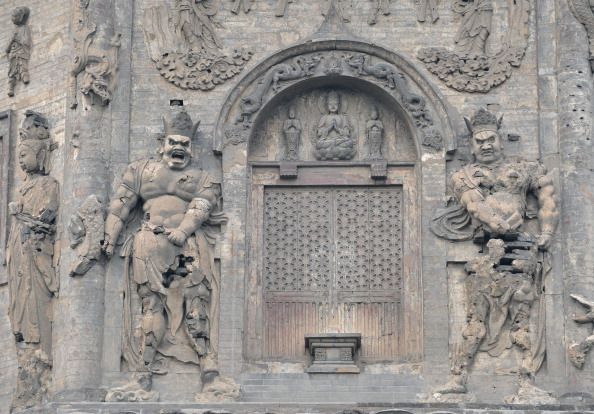
Archaeologists have discovered the ruins of an ancient palace that served as the summer retreat for the elite members of the Liao Dynasty. To escape the oppressive heat, each year from mid-April to mid-July the Liao emperors would move the royal family, along with palace officials, into the mountains of what is now China's Inner Mongolia Autonomous Region, according to Chinese state news agency Xinhua.
Archaeologists discovered more than 100 structural components at the site in Duolun County, including glazed tiles, pottery and copper nails, according to Xinhuanet. They recorded the foundations of 12 buildings—more than 2,500 square feet in total. Ge Zhiyong, a researcher with the Inner Mongolia Autonomous Region Institute of Archaeology, said that artifacts excavated at the site appear to date the palace to the mid-Liao Dynasty, according to Xinhua.
The palace's discovery should give archaeologists new insights into both the architecture and cultural customs of the Liao Dynasty, Ge told Xinhua. Large-scale excavations are expected to begin at the site.
The Liao Dynasty rose from the Khitan, the nomadic people of what corresponds to modern-day Mongolia and parts of northern China, Russia and Korea. It was founded by a Kaghan (a Khitan emperor) known as Abaoji, according to International Business Times. The dynasty came to power in either 907 A.D. or, depending on historical interpretation of what constitutes the dynasty's early days, in 916 A.D., when Abaoji officially declared himself as ruler. The dynasty excelled in art, music and poetry, according to Ancient Origins. In 1125, the Liao Dynasty fell to the rising Jin Dynasty, which would reign for more than a century afterwards.
Though the dynasty began with no written language for their "proto-Mongol" spoken dialect, its members developed two kinds of written scripts which, despite containing similarities to Chinese characters, have yet to be fully deciphered, according to the non-profit Asia Society.

They expanded aggressively, but to retain the "purity" of the Imperial family, ruling emperors couldn't marry from any foreign populations the Khitan conquered, according to Asia Society. However, the women who were part of the Imperial family may have had more political influence than their Chinese counterparts at the time. At least three Liao empresses have been historically documented as wielding "tremendous power" and dictating court policies, according to Asia Society.
The dynasty was the first foreign one to merge its original nomadic structure of conquest and cultural assimilation with prevailing Chinese style of government at the time, according to Asia Society, a strategy later emulated by the Mongol hordes—who came to power after they conquered the Jin dynasty.
Uncommon Knowledge
Newsweek is committed to challenging conventional wisdom and finding connections in the search for common ground.
Newsweek is committed to challenging conventional wisdom and finding connections in the search for common ground.
About the writer
Kastalia Medrano is a Manhattan-based journalist whose writing has appeared at outlets like Pacific Standard, VICE, National Geographic, the Paris Review Daily, ... Read more
To read how Newsweek uses AI as a newsroom tool, Click here.








